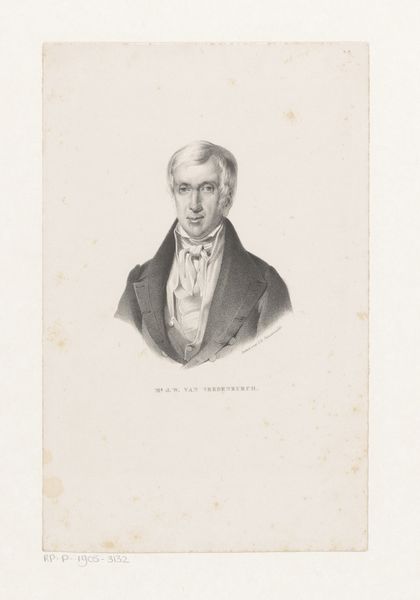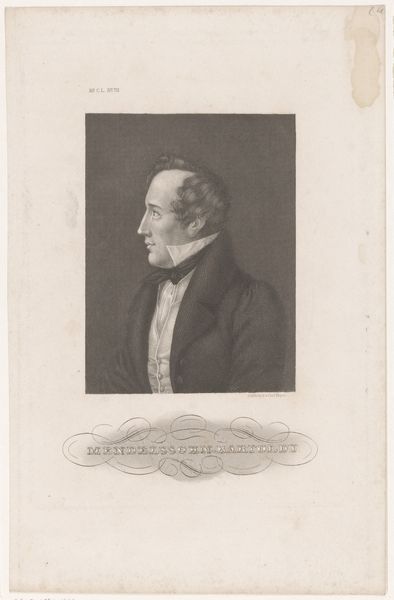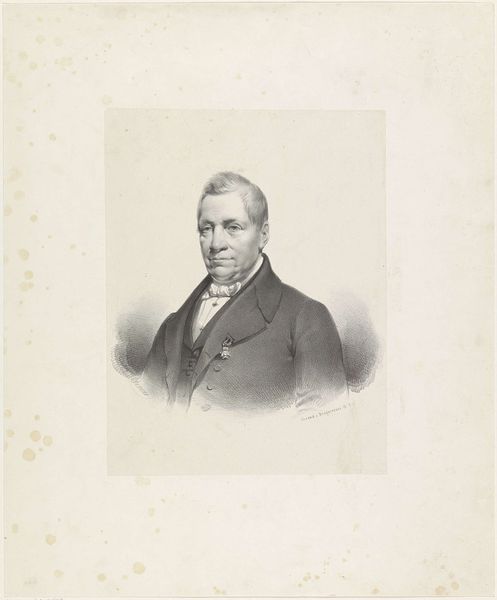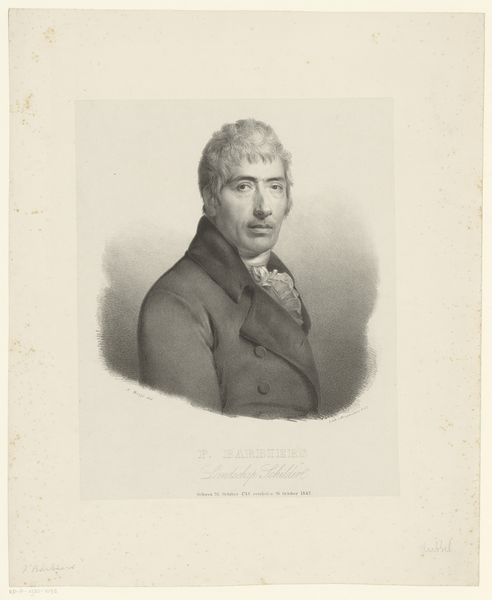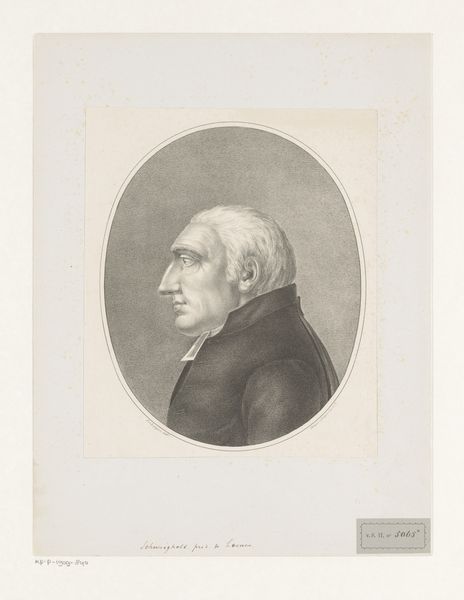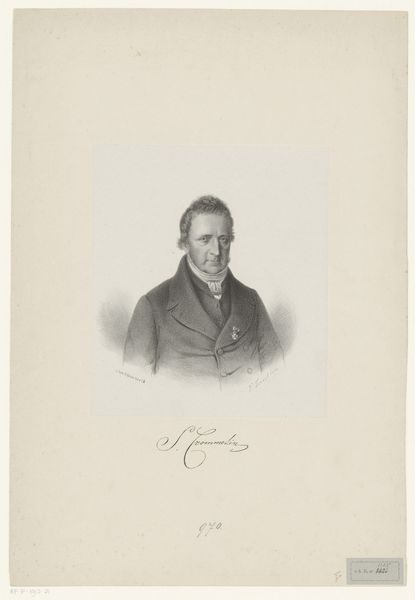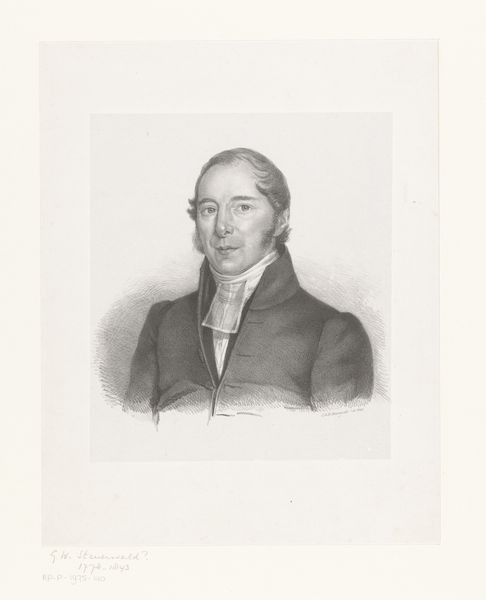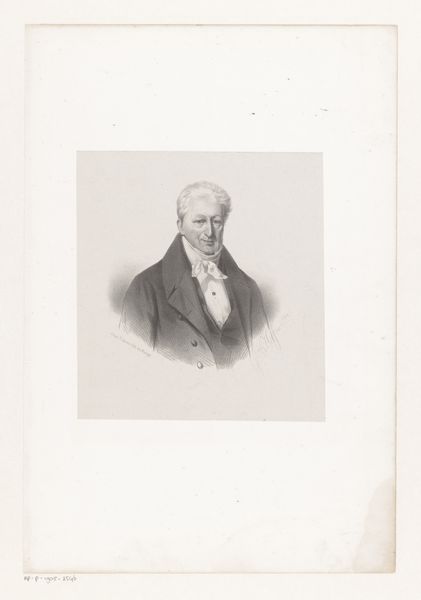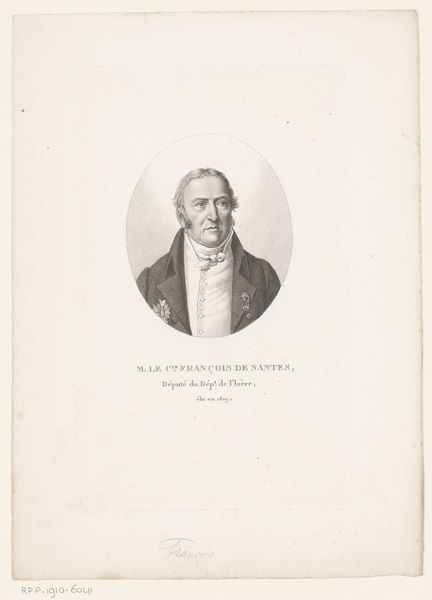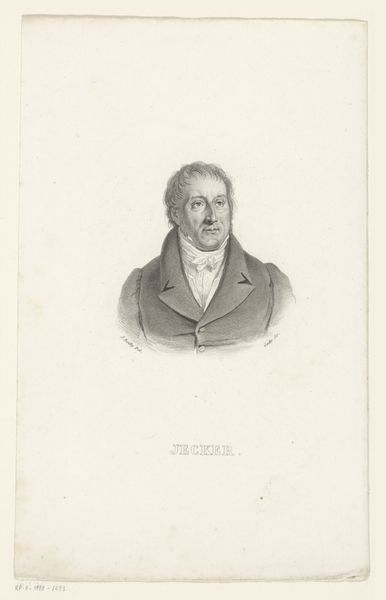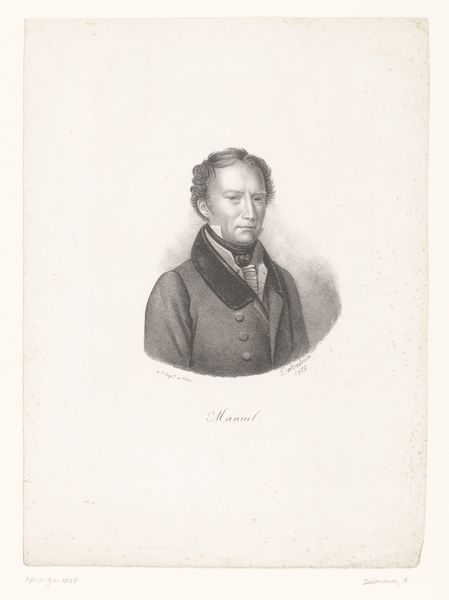
drawing, print, graphite, engraving
#
portrait
#
drawing
#
neoclassicism
# print
#
historical photography
#
graphite
#
academic-art
#
engraving
Dimensions: height 352 mm, width 272 mm
Copyright: Rijks Museum: Open Domain
Curator: Today we’re looking at a portrait of Joh. Chr. Plötzer by C. Steckmest, a graphite and engraved print created before 1905. What strikes you initially about this rendering? Editor: The man is stoic. The limited tonal range amplifies that feeling; every line seems deliberate, even somber. He projects such reserve. I imagine a prominent public figure, perhaps one weathered by political storms? Curator: Steckmest’s technical skill is undeniable. Observe the controlled cross-hatching that sculpts the face, building volume through the sheer manipulation of light and shadow. The tight handling and restricted palette further enhance the portrait's rather reserved affect. The geometric shapes give the work solidity. Editor: Yes, but even the severe neo-classical frame becomes part of the story. Notice how it emphasizes notions of enclosure. Is it about containing unruly passions and individual identities into something more acceptable within society? This image of a gentleman speaks volumes about that era. Curator: The composition and formal qualities certainly align with the neoclassical aesthetics that dominated much of the 19th century. There’s a controlled linearity and restraint here, absent of any dramatic gestures or superfluous ornament. Editor: Precisely, and this restriction echoes the larger narrative themes in a Europe still trying to reconstruct identity after great upheaval. I find the subject, the portrait's recipient, as somewhat representing the larger values inherent in western history: a powerful male, and a solid member of that epoch’s power structures. His slightly raised chin gives a very slight appearance of snobbery, and his stern stare does not lend itself to approachability. Curator: Fascinating! Though the composition maintains its equilibrium, this only intensifies his expression, a stark embodiment of the era's principles. The meticulous, calculated design, reveals an artistic process striving towards idealized standards. Editor: Absolutely. And in the portrait's symbols—his tightly knotted cravat, buttoned coat, all are symbols of order, I still consider that it represents those past restrictive ideals, to this very day. Food for thought, indeed! Curator: Indeed. The conversation’s intersection, from artistry to epoch echoes throughout this beautiful neoclassical engraving.
Comments
No comments
Be the first to comment and join the conversation on the ultimate creative platform.
